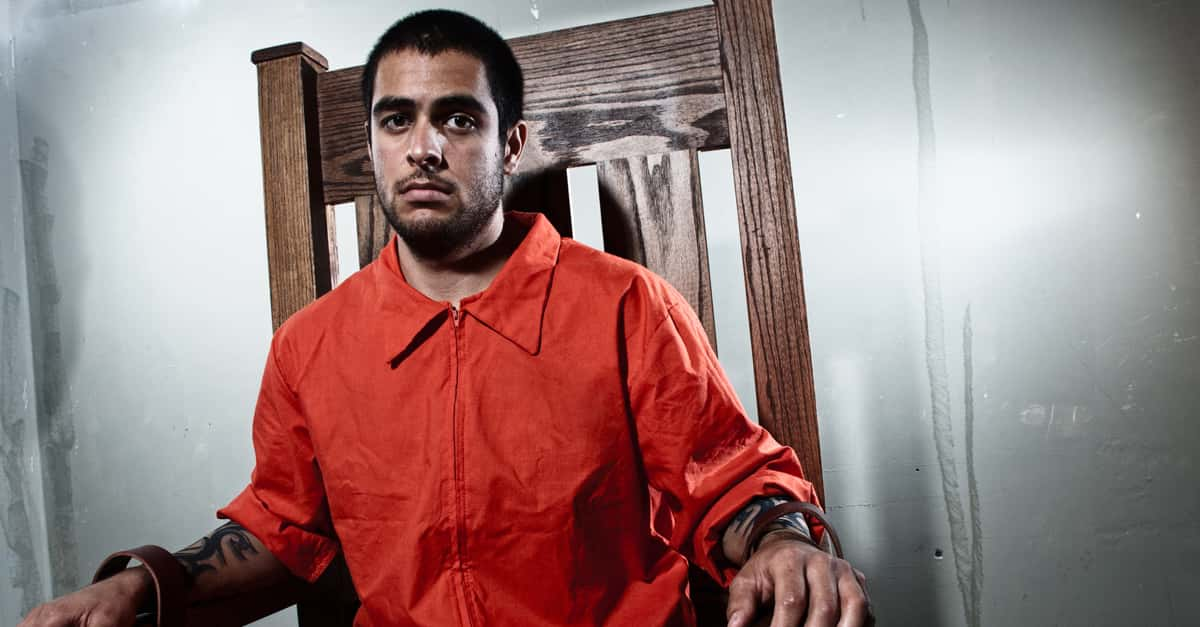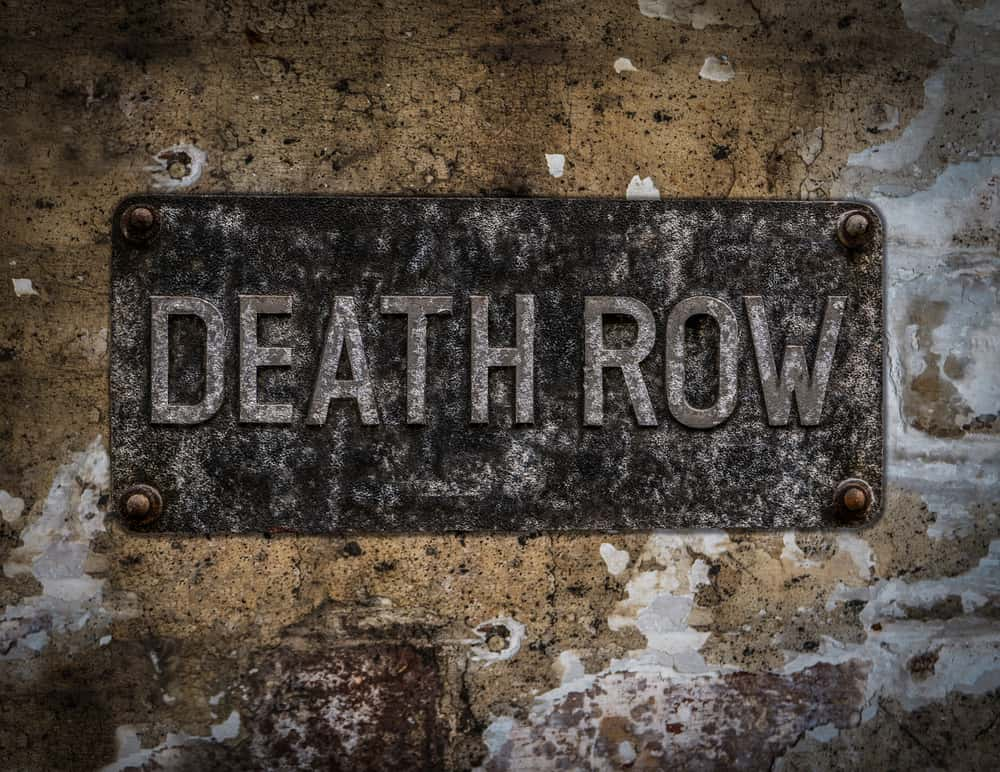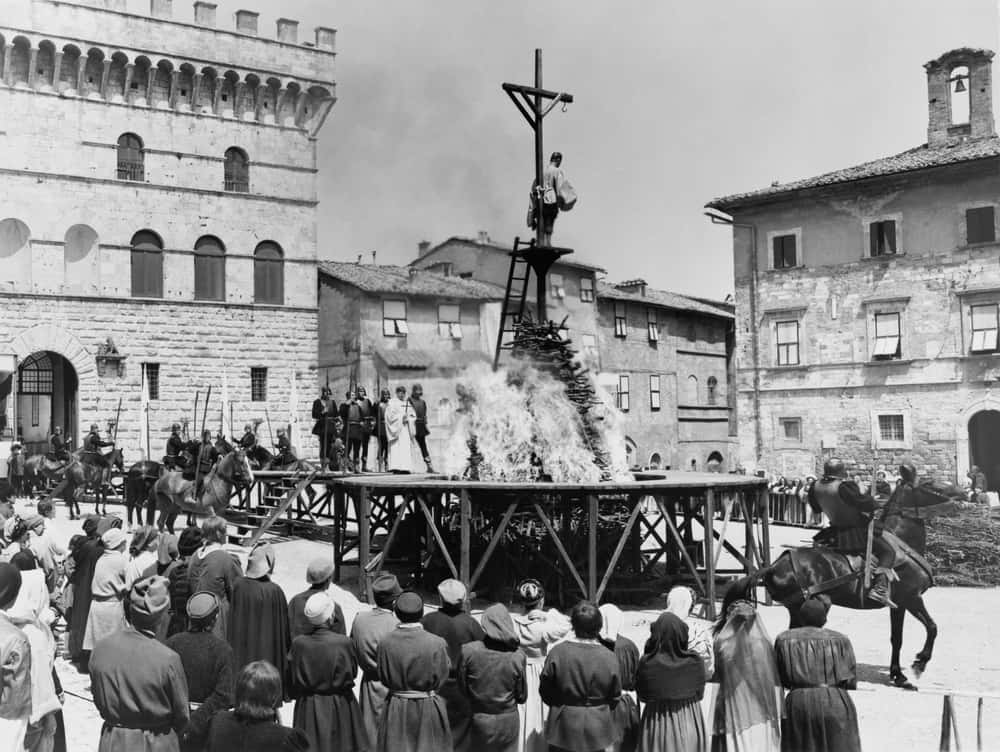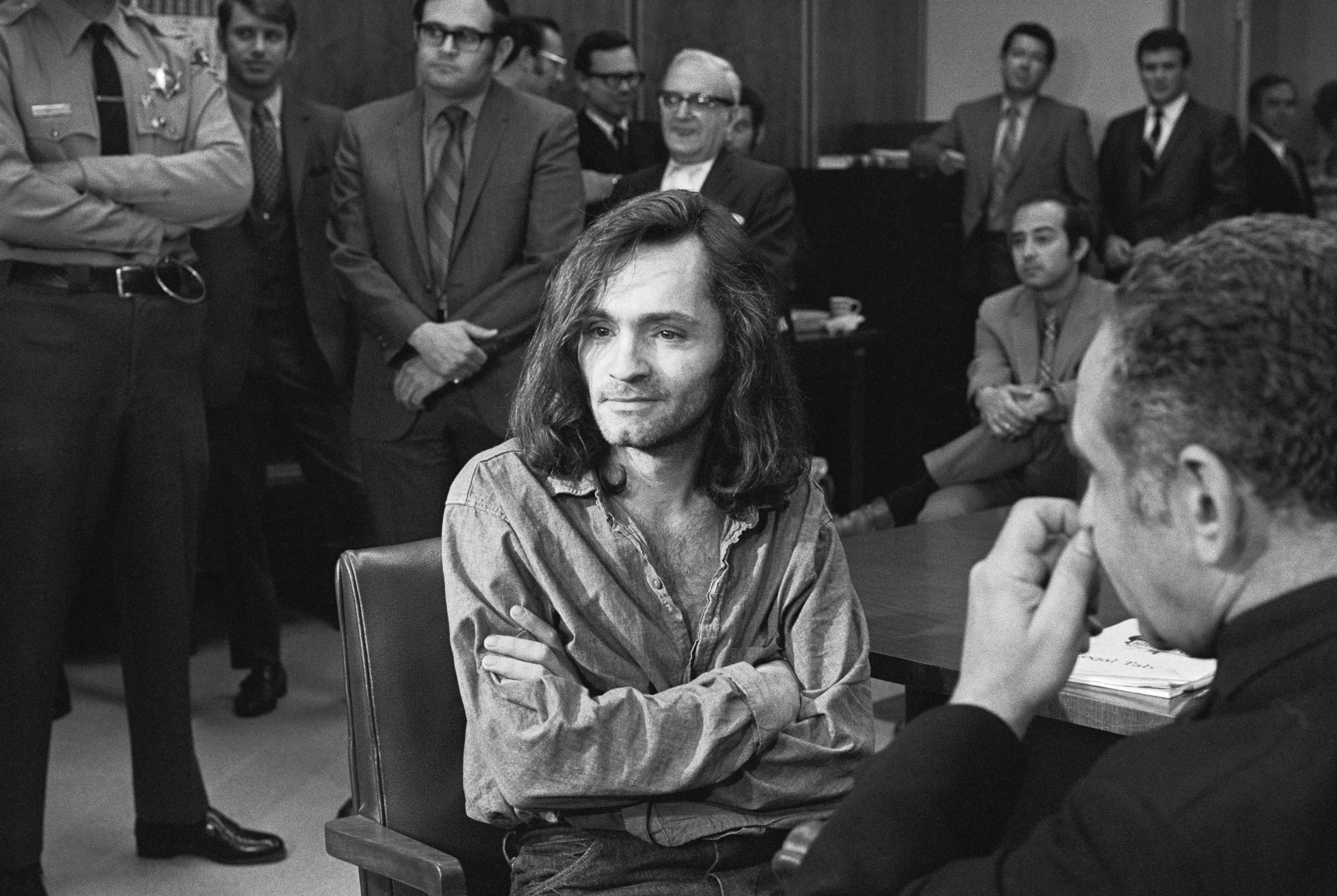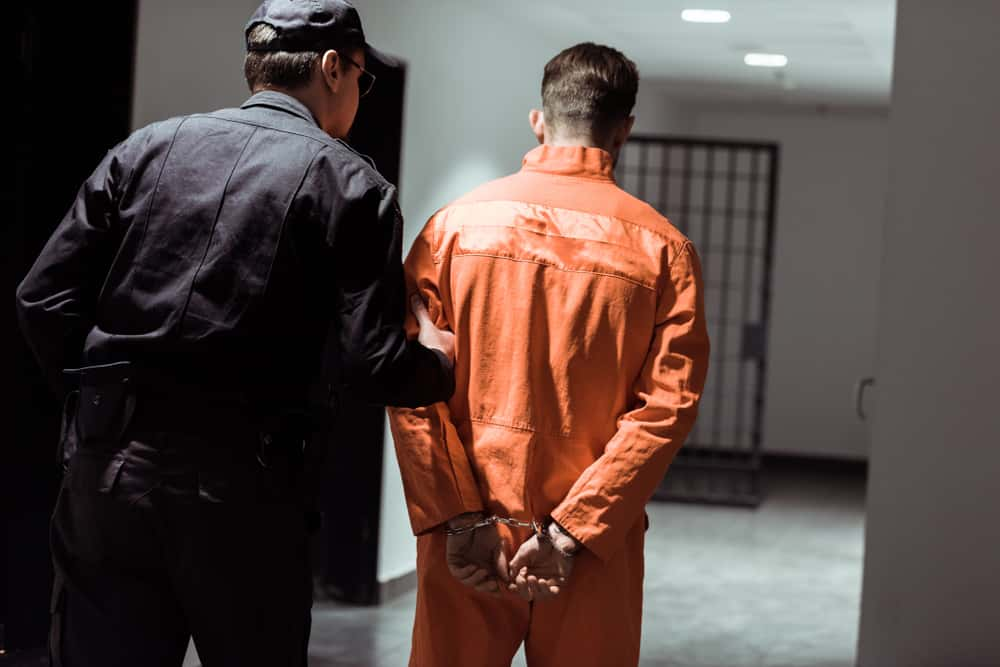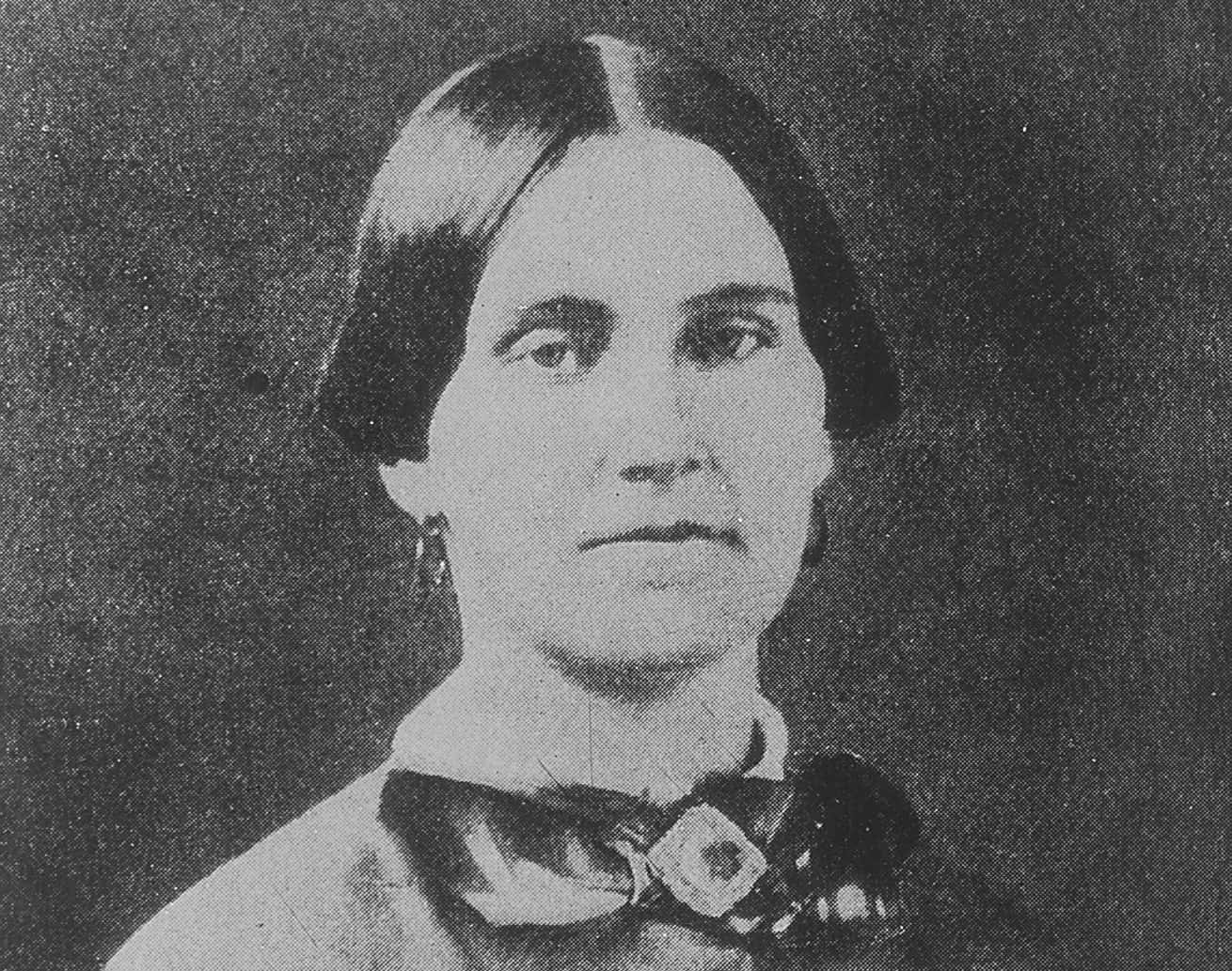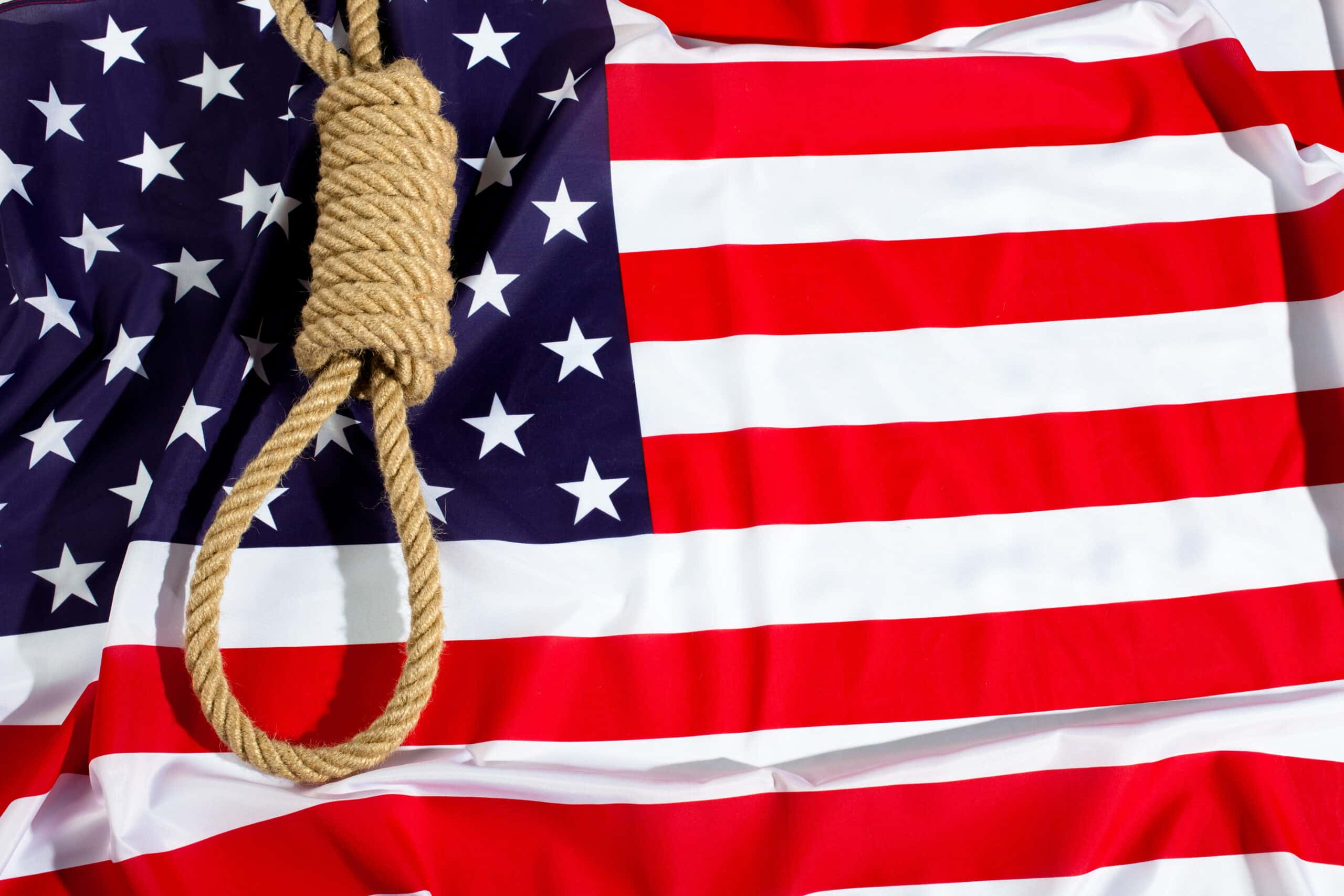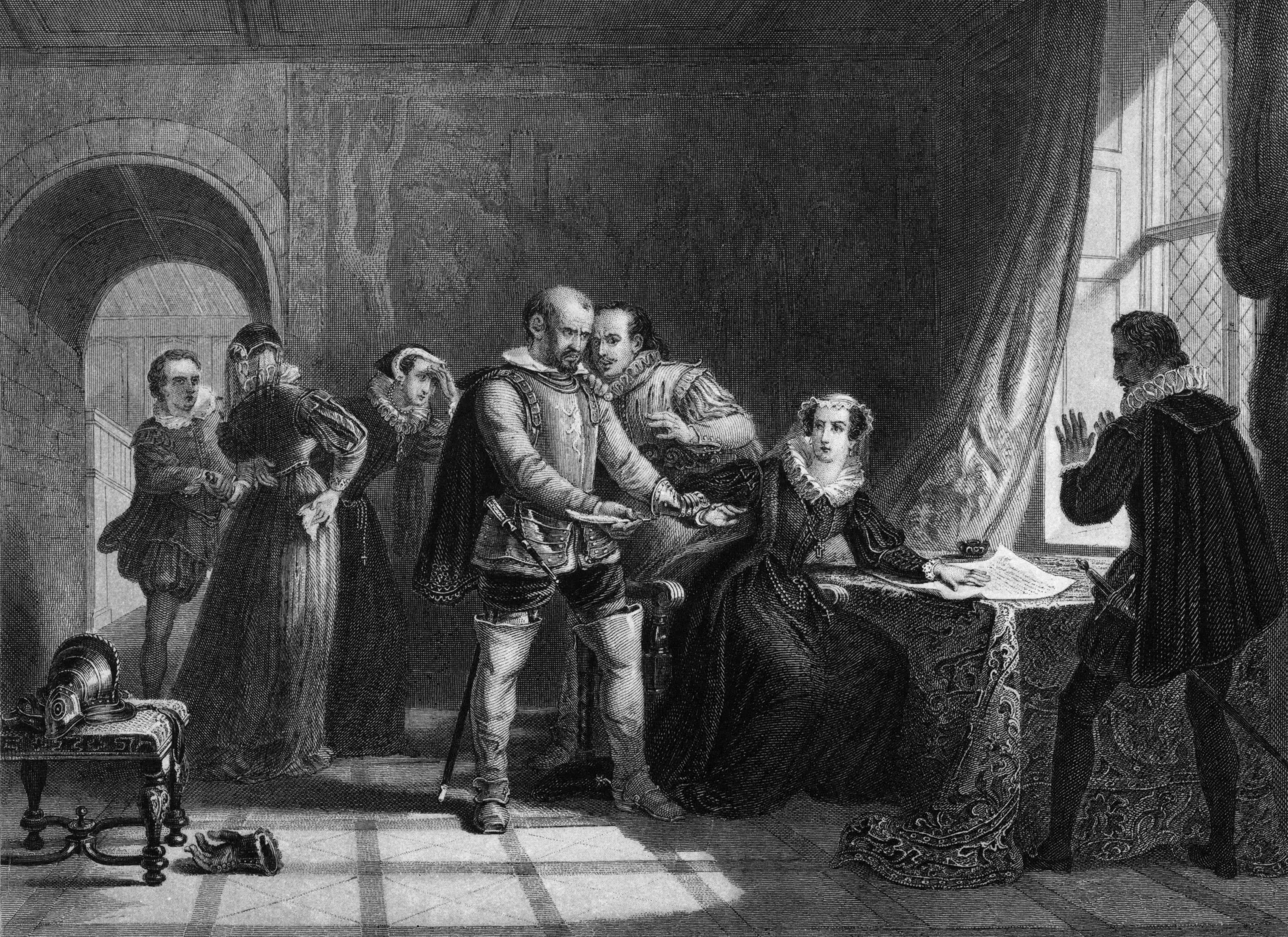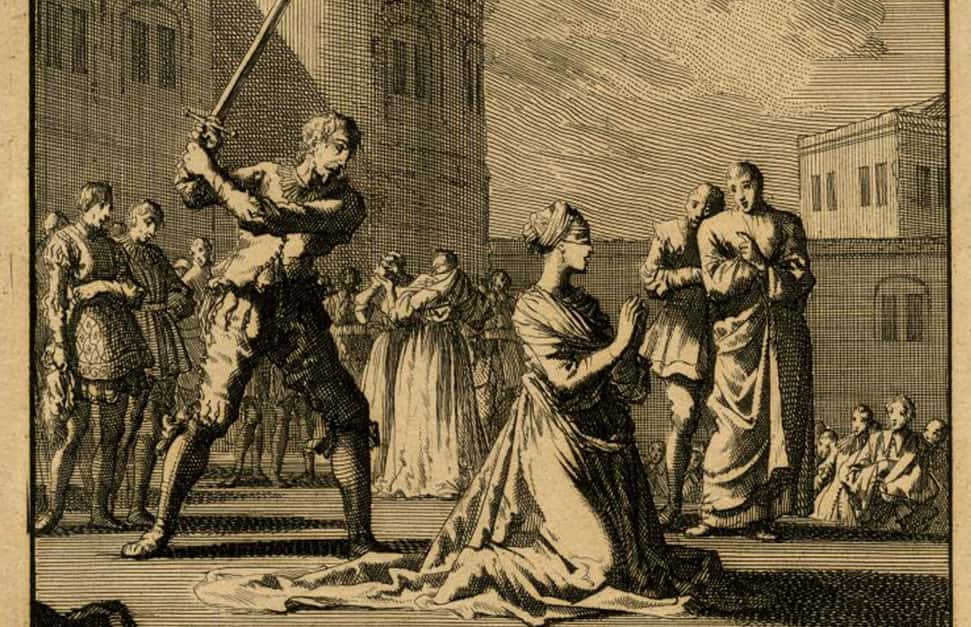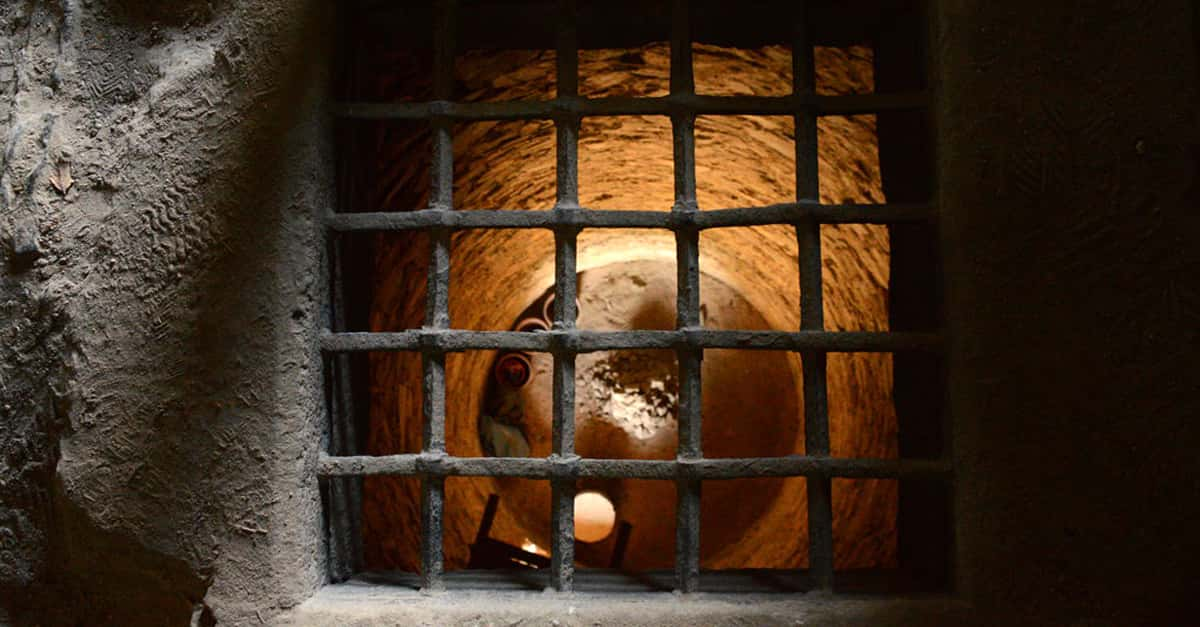“Other states are trying to abolish the death penalty... mine's putting in an express lane.”—Ron White, Houston, Texas
As far back as 1,754 years before the birth of Jesus, the state has been condemning people to death for a variety of offenses. A lot has changed about the death penalty in the last 3,700 years, but one constant remains: People demand vengeance. So, hang around for a minute, don't lose your head and we’ll inject you with some knowledge that you’re sure to get a charge out of.
Death Row Facts
44. Easy as 1,2,3
Lethal injection protocol calls for a series of three separate drugs that are given in order. First, the prisoner is given sodium thiopental, a strong barbiturate which causes unconsciousness within 20 seconds. Then, pancuronium bromide, a muscle relaxant which is designed to stop the breathing is given. This is followed by the final drug, potassium chloride, which stops the heart. When everything works as planned, death will occur in five minutes or less.
43. Giving Drugs a Bad Name
Drug manufacturer Pfizer announced in 2016 that it would no longer sell any of its products for use in lethal injections. They joined over 20 other drug companies who had made the same decision. With Pfizer leaving the market, there are no FDA-approved drugs currently available for use in the process. States have countered by using less-than-reputable suppliers and attempting to keep the details hidden from public view. This has caused delays in procuring the new drugs, as well as concerns about their effectiveness.
 Wikimedia Commons, Lauri Silvennoinen
Wikimedia Commons, Lauri Silvennoinen
42. Was His last name “Malfoy?”
Around 621 BC, the lawgiver Draco established a particularly brutal code of laws in ancient Greece. The death penalty was prescribed for many offenses, both big and small. Everything from stealing a cabbage to killing your neighbor resulted in a gruesome end. In fact, we still use the term “draconian” to refer to a type of brutal or unjust law.
41. Will Spy for Sangria
The first person put to death in the American colonies was Captain George Kendall of Virginia. He supposedly plotted to betray the British to the Spaniards. So much for that famous British sense of humor.
40. Overkill
The British laws that were brought to the colonies listed 222 crimes that were punishable by death. Everything from stealing from a rabbit warren to killing your spouse could bring the ultimate punishment. And God help you if you killed your spouse's rabbit.
39. It Deters One Person for Sure
A 2009 survey found that 88% of the country’s top criminologists don’t believe the death penalty is a proven deterrent to homicide. In addition, 87% believe the repeal of the death penalty would have no effect whatsoever on the murder rate.
38. We’re Number 7!
In 2016, the US trailed only China, Iran, Saudi Arabia, Iraq, Pakistan, and Egypt in the number of people executed.
37. Overachievers
There were officially 1032 executions last year, with Iran, Iraq, Saudi Arabia, and Pakistan accounting for 87% of the total. That number does not include China, however, who does not release information on executions. The Cornell University Law School estimated 2,400 executions took place in China alone in 2013.
36. Bucking the Trend
In the industrialized world, only the US, Japan, Singapore, and Taiwan still use capital punishment. While still legal in South Korea, there is currently a moratorium. On the plus side, the US doesn’t beat people with a cane for crimes such as littering and graffiti, like in Singapore. So, way to go, us.

History's most fascinating stories and darkest secrets, delivered to your inbox daily.
35. The Rest of the World
Abolition of the death penalty is a condition for joining the European Union, and currently, the only European country with capital punishment is Belarus. There also has not been an execution since 1999 in South America, Australia, or New Zealand.
34. Let’s Make a Day of It
In 19th century America, executions were frequently public affairs that often drew thousands of people. In fact, the last public execution took place in Owensboro, Kentucky in 1936 and was witnessed by an estimated 20,000 people from around the country. Reporters were very critical of what they called “the carnival in Owensboro,” and their reports helped turn public opinion against such spectacles.
33. Don’t Mess with Texas
Since 1976, 1,468 people have been executed in the United States. Texas leads the way with 548, almost five times as many as the runner-up, Virginia. That’s what happens when you steal brisket in Dallas.
32. The Tide is Turning
The percentage of Americans who support the death penalty has fallen from a high of 80% in 1996 to its current level of 49%, versus 42% who are opposed. The public has favored capital punishment every year since 1968, when hippies were still a thing.
31. No Wonder They’re in Debt
California has spent over $4 billion dollars on the death penalty since 1978. In that time, they have executed just 13 people. To add insult to injury, Charles Manson died of natural causes at age 83, and O.J. is still playing golf. Well played, Cali. Well played.
30. Decisions, Decisions
In the 31 states that still employ capital punishment, there are currently five methods of execution available. Besides lethal injection, there is the firing squad, the gas chamber, electrocution, and hanging. 16 states provide lethal injection but also give the condemned an opportunity to select another method.
29. Chop, Chop
Nationwide, of the people who approve of the death penalty, 82% approve of lethal injection as an acceptable method of execution. Perhaps a little more surprising (and a lot scarier), a full 27% support beheading. Beheading. In America. 27%. Yikes. Good thing nobody told them about sawing.
 Wikimedia Commons, Andrew Butko
Wikimedia Commons, Andrew Butko
28. Maybe They’re Setting a Bad Example
Since 1990, the murder rate in non-death penalty states has been consistently lower than the rate in death penalty states. It went from a low of 4% difference in 1990 to a whopping 44% in 1996. As of 2016, the rate sits at 25%. The South, which executes more prisoners than any of the other three regions, also has the highest murder rate.
27. I Think I See a Pattern
Over 80% of the studies conducted on capital punishment in the US have determined that you are far more likely to be sentenced to death for the killing of a white person than any other race. Maybe instead of killing white guys, people should just make fun of their New Balance sneakers.
26. Striving for Equality
The first woman executed in the US was Mary Surratt, on July 7, 1865. Surratt was the owner of the tavern in Maryland where John Wilkes Booth schemed with his confederates to kill President Lincoln, Vice-President Johnson, and Secretary of State William Seward. She was hanged at the Arsenal in Washington D.C. with three of her co-conspirators.
25. Georgia on My Mind
The last woman executed in the United States was Kelly Gissendaner, who was killed by lethal injection on September 30, 2015. As they drew back the curtains on her execution chamber, with her last words she apologized to the victim’s family and sang “Amazing Grace.”
24. More Effective Than a Timeout
Since executing Thomas Grounger in 1642 in Plymouth Colony, Massachussets, there have been approximately 365 executions of people who were under 18 when they committed their crime. The last one occurred in 2005, shortly before the Supreme Court ruled the practice to be in violation of the Eighth Amendment.
23. Where Were We?
In 1976, 37 states rewrote their death penalty statutes to conform with the flaws the Supreme Court had found four years earlier. The first execution after the ban was lifted was Gary Gilmore, who requested a firing squad in Utah. His famous last words? “Let’s do it.” Maybe it was sponsored by Nike.
22. Unlucky Eddie
During World War II, almost 50 soldiers were given the death penalty for desertion, but Private Eddie Slovak was the only one who was actually executed for it. He was the first soldier to face the firing squad for desertion since the Civil War.
21. Ready…Aim…
In Utah, the firing squad is made up of five policemen who remain anonymous. They fire their rifle from behind a black curtain, 25 feet from the prisoner. Each rifle has only one bullet, and one contains a blank. A target is placed over the heart as to not disfigure the head. The last man executed by firing squad was John Albert Taylor, in 1996.
20. Back with a Vengeance
The US Federal government executed 34 people between 1927 and 1963. They then took 38 years off before resuming with the lethal injection of Timothy McVeigh in 2001, one of the two men responsible for the bombing of the Federal Building in Oklahoma City in 1995. McVeigh’s execution was made available via closed-circuit TV to the families of the victims.
 Wikimedia Commons, Olaf Growald
Wikimedia Commons, Olaf Growald
19. Are You Sure It’s Not a Cheat Day?
One of the more unusual requests for a last meal came from California murderer Clarence Ray Allen. Allen requested a buffalo steak, KFC, and pecan pie with black-walnut ice cream. Both the pie and the ice cream were sugar-free. Man, people in California are REALLY committed to healthy eating.
18. Death is No Bargain
Despite the relatively low cost for the actual materials (less than $100 for lethal injection), the associated costs make execution far more expensive than a sentence of life in prison. To begin with, initial costs to provide a defendant with legal counsel adds an average of $400,000 to every capital case. In addition, the state can spend up to 40 times as many hours on an appeal for a death penalty case. And finally, the cost of housing a death row inmate is roughly double that of a prisoner in general population.
17. Hoping for an Early Heart Attack
In 1996, condemned Mississippi murderer Gary Carl Simmons, Jr., requested two large pizzas, 10 packs of Parmesan cheese, 10 packs of ranch dressing, a family-size bag of Doritos, eight ounces of cheese dip, four ounces of jalapeño peppers, two large strawberry milkshakes, two cherry cokes, one super-size order of McDonald’s fries with extra ketchup and mayo, and two pints of strawberry ice cream. His meal clocked in at an artery-clogging 29,000 calories. Michael Phelps would be jealous.
16. Olive Garden
On the flip side, Iowa murderer Victor Feguer, hanged in 1963 for kidnapping and murder, requested a single olive with the pit still in it. He was hoping that an olive tree would sprout from his body after burial. Spoiler alert: It didn’t.
15. Money Matters
Capital punishment is the ultimate class system. Over 90% of the people executed in the United States could not afford their own attorney and were forced to use court-appointed counsel.
14. Trending Down
In 2016, 20 people were executed in the United States. This represents the fewest number of executions since 1991. And after setting a 40-year low in 2015, the number of death sentences imposed was down another 39 percent.
13. Justice for All?
In a study done between 2007 and 2017 on death row exonerations, official misconduct was the leading cause of a wrongful verdict, being found to be present in 82% of the exonerations. Perjury and false identification checked in at 76.5%, while false or misleading forensic evidence, inadequate counsel, false confession, and mistaken eyewitnesses accounted for the rest.
12. Oops
It is estimated that in the 120-year period between 1890 and 2010, 3.15% of the 8,776 executions carried out in the US were botched in some way. This includes hanging ending in decapitation, people catching fire in the electric chair and lethal injection drugs causing discomfort and convulsions when administered. In fact, 7.12% of the time, something goes wrong with the lethal injection process. The surest way? Firing squad. There have been 39 successful executions by firing squad and zero botches.
11. Lethal Dose
First proposed in 1888, lethal injection was first approved by the state of Oklahoma after being introduced to the state legislature by Reverend Bill Wiseman in 1977. Texas, not to be outdone when it comes to executions, was the first state to utilize lethal injection, putting Charles Brooks to death on December 7, 1982.
10. Tubby Junkies are in Trouble
The most widespread problem with lethal injection is the inability to find a vein in which to administer the deadly cocktail. These problems are exacerbated if the condemned is obese or a frequent intravenous drug user. The worst case was that of convicted killer Romell Broom in Ohio in 2009. Despite two hours, 18 attempts, and assistance from Broom himself, prison officials were unable to locate a suitable vein. After a call to the governor, the execution was postponed. They were unable to come up with a suitable solution and Broom remains on death row to this day.
9. Probably the One-Armed Man
Since 1973, 161 death row inmates have been completely exonerated. The average time spent on death row by those prisoners was 11.3 years. Surprisingly, DNA evidence was only used to overturn 20 convictions.
8. Miscarriage Averted…Finally
In 2014, Glenn Ford walked out of Angola State Prison in Louisiana a free man. He is thought to be one of the longest-serving prisoners on death row to ever be exonerated. Ford, an African-American, was convicted of murder in 1984 by an all-white jury which had been cherry-picked by the prosecution. His lead council was an oil and gas attorney who had never tried a case in front of a jury. His second lawyer had only been out of law school for two years and mostly handled cases resulting from automobile insurance claims. Ford passed away a year after leaving prison at age 65.
7. Small Compensation
The amount of money paid to exonerated prisoners varies widely from state-to-state. The federal government and five other states pay the innocent prisoners $100,000 for every year they were mistakenly kept on death row. Other states pay much less, with Wisconsin doling out a maximum of $5000 per year. It is also estimated that 40% of all exonerated prisoners receive no compensation at all.
6. Like Uber, Only WAY Worse
In 2003, China outfitted 18 vans with a mobile lethal injection chamber. The condemned was picked up, strapped down to a table in the back, and given a lethal combination of drugs. This is a definite improvement from the days when China would execute someone with a single shot to the head, and then charge surviving family members for the cost of the bullet. No word on whether the prisoners are required to chip in for gas.
 Shutterstock
Shutterstock
5. Just Put It on My Credit Card
States are becoming less and less generous with the final meal for the condemned. While Florida allows up to $40 to be spent, Oklahoma only allocates $15. In 2011, Texas abolished all special requests after Lawrence Russell Brewer requested a meal of epic proportions…and ate none of it. No word on whether he requested a doggy bag for the leftovers.
4. Saw
Many brutal methods of execution have been devised over the years, but perhaps the most barbaric was sawing. The condemned was hung upside down between two trees with the legs apart. They would then start sawing between their legs and work their way down. Oftentimes, the person would still be alive when the executioners finally reached the head…and sawed it in half. Ouch.
3. A Brief Timeout
In 1972, the Supreme Court voted 5-4 to strike down the death penalty after they found it to be in violation of the Eighth (cruel and unusual punishment) and the Fourteenth (equal protection) Amendments. Though it was reinstated just four years later, the decision allowed Charles Manson and his “family,” who had been sentenced to death for the Tate-LaBianca murders, to have their sentences automatically commuted to life in prison.
2. Family Tension
Throughout her reign, one of her main enemies was her first cousin once removed, Mary Queen of Scots. Elizabeth I imprisoned Mary when her actions turned against the English throne. Mary was in prison for 18 years before she was finally executed. Historically, there is some disagreement on whether Elizabeth officially sanctioned the execution; it was carried out quickly, and Elizabeth had been reluctant to sign and then dispatch the warrant. The executioner begged for Mary’s forgiveness before killing her. Her final words spoken to another person were to him, to whom she said, "I forgive you with all my heart, for now, I hope, you shall make an end of all my troubles." Then, just before the axe severed her head from her shoulders, she said, “Into thy hands, O Lord, I commend my spirit.”
Interestingly, during their long and tumultuous relationship, Elizabeth I and Mary, Queen of Scots never actually met in person.
1. A Royal Ghost
Anne Boleyn was married to King Henry VIII. She was beheaded for adultery, incest, witchcraft, and conspiracy against the king in the Tower of London in 1536, just three years after her wedding to the king. When Anne Boleyn was escorted to the scaffold to be beheaded for her crimes, she knew that she needed to protect her standing with the king, and in doing so, protect her daughter. She begged leave to address the crowd gathered to witness her execution. Despite the lack of evidence against her, her final words to the people were as follows:
“Good Christian people, I am come hither to die, according to law, for by the law I am judged to die, and therefore I will speak nothing against it. I come here only to die, and thus to yield myself humbly to the will of the King, my lord. And if, in my life, I did ever offend the King’s Grace, surely with my death I do now atone. I come hither to accuse no man, nor to speak anything of that whereof I am accused, as I know full well that aught I say in my defence doth not appertain to you. I pray and beseech you all, good friends, to pray for the life of the King, my sovereign lord and yours, who is one of the best princes on the face of the earth, who has always treated me so well that better could not be, wherefore I submit to death with good will, humbly asking pardon of all the world. If any person will meddle with my cause, I require them to judge the best. Thus I take my leave of the world, and of you, and I heartily desire you all to pray for me. Oh, Lord, have mercy on me! To God I commend my soul.”
She spoke this address bravely, with a calmness that many of the dukes and earls gathered there later wrote about. She was then asked to kneel, awaiting the French executioner’s sword. Reports stated that she appeared dazed and fearful as she awaited the blow, saying a simple prayer: “O Christ, receive my spirit.”
As the steel met her neck, “immediately, the executioner did his office” (Weir, Alison “The Lady in the Tower” ). Her head fell onto the straw, and her body lay on the scaffold for several hours because burial preparations had not been made.
There have been many reports of a ghostly apparition of a headless woman roaming near on the north side of the White Tower, where Boleyn was killed, as well as in the White Tower.
Sources: 1, 2, 3, 4, 5, 6, 7, 8, 9, 10, 11, 12, 13, 14, 15, 16, 17, 18, 19, 20, 21, 22, 23, 24, 25, 26, 27, 28, 29, 30, 32, 33, 34, 35
A previous version of this article stated that authorities in Taiwan use caning as a punishment for graffiti and littering, when Singapore is actually the country that uses that form of punishment. The article has been updated to reflect the correction.

